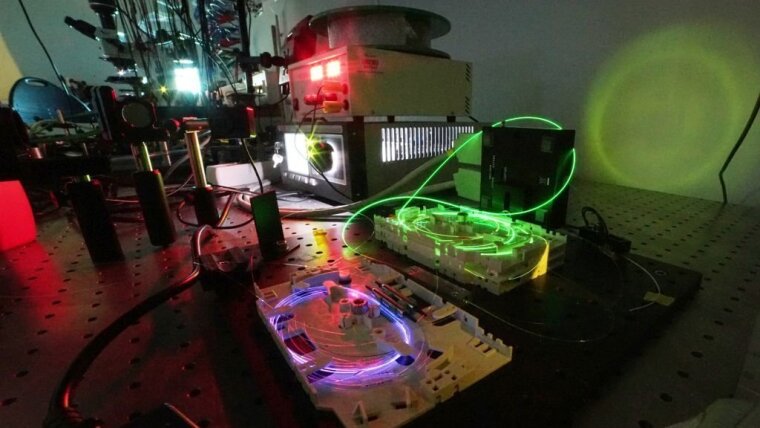
High average power laser amplifiers based on Yb- or Tm-doped active fibers can be used to generate secondary radiation, ranging from the soft X-ray (0.1 nm to 100 nm) up to the THz (30 µm to 3 mm). This occurs during the interaction of intense laser pulses with gases and solids. Depending on the generation condition, a comb of odd harmonics with roughly the same intensity in the soft X-ray, known as high harmonic generation (HHG), frequency combs in the mid infrared or a single cycle THz pulse can be generated.
The outstanding properties of the secondary radiation (e.g. wavelength, high spatial coherence, high beam quality and ultrashort pulse duration) has attracted great attention in numerous applications in spectroscopy and imaging. However, an ever-growing average power will increase the signal to noise ratio and leads to better statistics, in general.
In our group we theoretically model and optimize the secondary emission processes. Driving these optimized processes with high average power lasers (developed in our group), soft X-ray, mid-IR and THz radiation with unprecedented average power can be shown. Therefore, depending on the spectral region, average power levels of pW (< 10 nm), mW (60 nm) and up to more than 500 mW (4 µm - 3 mm) can be reached – constituting to the most powerful sources world-wide.
